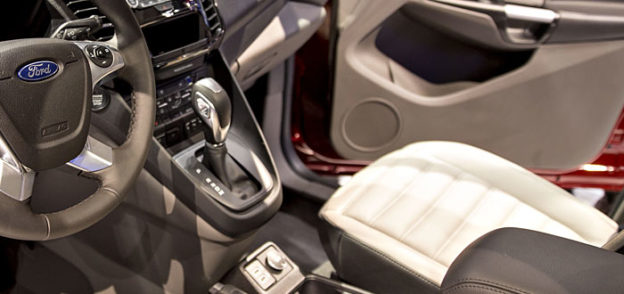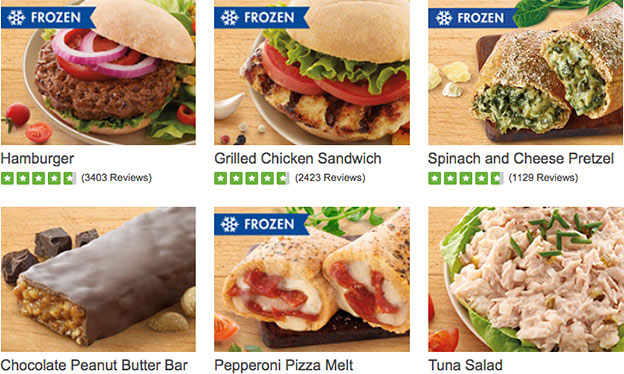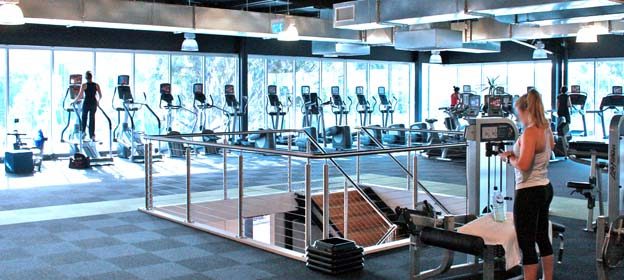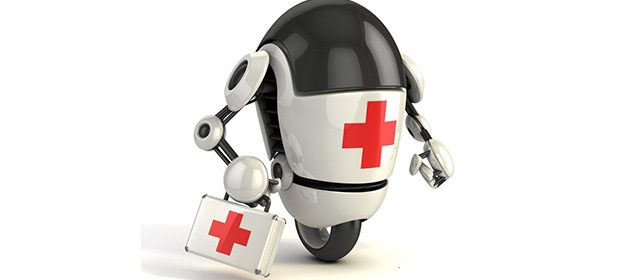As an overextended physician in my 40’s, with a family life and a daily sense of exhaustion, I have given up the quixotic dream of helping to change healthcare in this country. I’m just trying to survive each day, along with my patients, and to be an efficient and helpful primary care doctor.
If you too have accepted that our healthcare system is a bloated, unfixable, disappointing mess, and that you are just a squirrel trying to get a nut each day, then read on for small tips on how to survive, nay thrive, within the sad drama that has become the modern office visit.
Resolve that someday, when perhaps you are better rested, better informed, and the industrial-capitalist-insurance-forprofit model has eaten itself alive, perhaps then you will return to your passionate dreams about how to be a better doctor and craft a better medical world. In the meantime, here’s an atomic bomb shelter model to survive.
1. See patients in one room
I used to carry a laptop from room to room, fumbling around and drifting from place to place to see patients. Stop that. Set up shop in one room, and plan on being there for most of the day. Get a comfortable chair. A green plant. A mug of coffee and a water bottle. One room facilitates the rest of this list as you will see. Patients can be brought back and their visits begun in an adjacent room. When you are ready for them, leave your room and ask them to kindly join you next door where you’ve been preparing for their visit. Unless they are extremely old or frail, they will get used to the shtick, and come to expect it.
2. Take 1-5 minutes to review each chart before starting the visit
I used to feel so bad about running late that after finishing with one patient, I would burst into the next room, as if punching a time card, and apologize to the patient, barely knowing whom I was seeing next. Forget that. It doesn’t serve you or the patient to be unprepared for the visit. You will make mistakes, be unfocused, and look like you don’t remember them.
Instead, sit in your little home base with the door closed. Review the last visit or two. Jot down some quick reminders on an actual piece of paper. Among the 15 complaints from last visit, which ones still need attention? I write down chief complaints and quick to do lists. (Last visit – Chest pain, ?stress test done. Elevated alk phos. Bone scan ok. ?paget’s. See rheum. DM2. HTN. Colonoscopy scheduled? Dysphagia, needs EGD. Etc)
Review imaging tests. Jot down loose ends. Review specialist letters’ conclusions. Review recent labs.
Scan vital signs. Did they lose 20 pounds since last visit, unintentionally? Is the BP 180/100? Bad to miss that.
3. Set up the assessment and plan
Yes, do this before the visit. I know you haven’t even seen the patient yet, but unless she is here for a quick same day visit, she’s going to have her own agenda and priorities as soon as you open the door. If you don’t crystalize your own agenda before you are juggling hers, the visit is going to be even more of a struggle.
List 5-15 chronic or recent problems on the chart’s assessment and plan before even seeing the patient. If there are major tasks you know the patient needs, or has failed to complete, order them before seeing the patient. Chest pain, didn’t get stress test, you’ve already ordered it. You can always delete it.
Once the visit has begun, you can add new complaints and diagnoses. Sometimes the visit can become unruly, and finishing with a problem list 10-20 issues deep is exhausting. But 99214’s and 99215’s result, diligent care is achieved, and everyone is happy-ish.
4. Small talk is good, for a small time
This hurts the most. I love knowing my patients as human beings, appreciating their stories, legends, quirks, bravery, and fears. But this is survival mode, and if you are in a saturated situation with kids to pick up by 6 PM at school after-care, then you must stay on point after a brief detour into humanism.
This really sucks.
5. Let the patient’s agenda come first
You may or may not see the patient holding a tangible list of problems in hand, but what you don’t want to do is take over from the beginning, force your way through your pre-planned list of 5-15 items, and then find out they have 6 more. “I know you are here for a check up today, and I have a lot of questions to review with you from recent visits, but I want to give you the floor first. How are you? What can we help with today?” It sounds like family medicine softness. Kind of deadly. But it is actually eastern Zen philosophy combined with German engineering – letting the visit pass through you without resisting its true motivations, yet holding onto an invisible scaffolding beneath.
Once you’ve handled the patient’s biggest concerns, your preplanned list may already overlap with theirs, making the additional dump of your diligent reminders easier. Don’t drag this part out. You’ve already done the work from prior visits. Lung nodule, due for CT Chest, reminder and script given.
6. Demand enough time
Modern primary care visits cannot be reasonably accomplished in less than 20 minutes. Demand 20 minute visits for chronic care, and 30-40 for the most complex patients, hospital follow ups, new patients, and most “preventative physicals” which end up being chronic disease management with USPTF essentials added in. 15 minutes is disrespecting you and the patient, and making money for someone else anyway. Plus, with better care 99213’s are rare, so it evens out or you come ahead in terms of RVU’s and that stuff.
7. Smile, breathe, laugh if you can
It really helps. But don’t force it. A smiling or laughing doctor at the wrong time is creepy and unnerving.
When rechecking a blood pressure, walk the nervous patient through some calming, deep breaths, and while telling them to relax their muscles, you do the same. No laughing at this time.
8. At the end of the visit, give a narrative outline
Sometimes patients won’t let you talk as much as you need to. They are excited, nervous, or just talkative. You have to wrap this up in a tidy manner for you and them. “So I understand what you’re telling me. I’m going to tell you my impressions about what is going on, then review some diagnostic tests we may or may not want to do to figure this out, and then we’ll talk about treatment options.” That way they know to give you some space to help them. “After that, please ask any questions you have, and then we’ll run through a quick summary of your old issues with some reminders.”
Bring more structure to the visit as it progresses. Hopefully, it is satisfying for you and the patient. Making order out of chaos is what humans do, even if the laws of thermodynamics still prove everything we do ultimately creates more disorder. Alas…
9. Get up and escort patient out at the end of the visit
This is good manners. It is also a ceremonial display that this dramatic interaction has reached its natural conclusion. It stretches your legs, helps your back, and alleviates pressure on your hemorrhoids. Just kidding. Maybe not.
10. Return to your room, close the door
With peace and quiet, finish your note, organize your thoughts into coherent, thoughtful, narrative documentation. I insist on speech-to-text dictation (Dragon medical dictation software). I refuse to click on boxes or try to cram the patient’s complex story, overlapping ideas, and fluid assessment and plan into templates provided by most electronic medical records. It’s not human, and it’s bad. Enough said.
If I’m running more than 30 minutes late, I will stop finishing each note. Instead I will then move on to the next patient’s chart and start the whole pre-gaming process all over again. Leaving the full documentation of the visit for the end of the day, or “lunchbreak” whatever that is, is a total bummer. But it happens.
In between patients, take a deep breath or 5. Close and rub your eyes. Do some tai chi poses, or practice a minute of mindfulness stuff. It really helps, and maybe your first heart attack will delayed.
11. Noble sacrifices will be made
This part is optional, depending on how badly you need to get out on time and pick up your kids, or walk your dog. Consider sacrificing small talk with colleagues. Eat your lunch in that bunker of a room while reviewing the 25 phone calls that have come in for you while you were seeing patients. Put on some music. Stretch. This is a sad departure from those you work with. Optional.
12. Delegate
You can’t do it all. Don’t feel bad. Your mission is to be the doctor. Medical assistants and front desk personnel should be there to support the whole enterprise.
Good luck. Hopefully this will make you a more efficient, more diligent, better doctor within the horrible confines of a typical, busy primary care practice. There is no one-size-fits all. But this approach works for me. I bring significantly less work home, and achieve greater productivity than my colleagues.
I’m soldiering on, muddling through, being a workhorse. These are not visionary pointers, and there is little inspiration in them. But until the larger struggle is won against our broken healthcare system, some of us choose to survive within the system, while others set up systems of care that are off the grid with concierge practices, ideal micro practices, or some other funky model for cash.
It also helps to have a photo depicting a rustic, mossy cabin in the woods posted somewhere.












